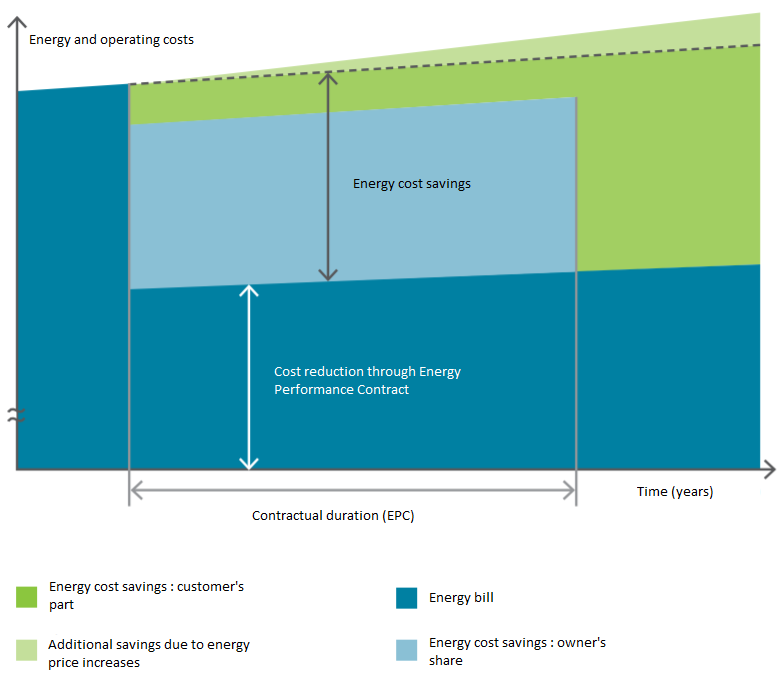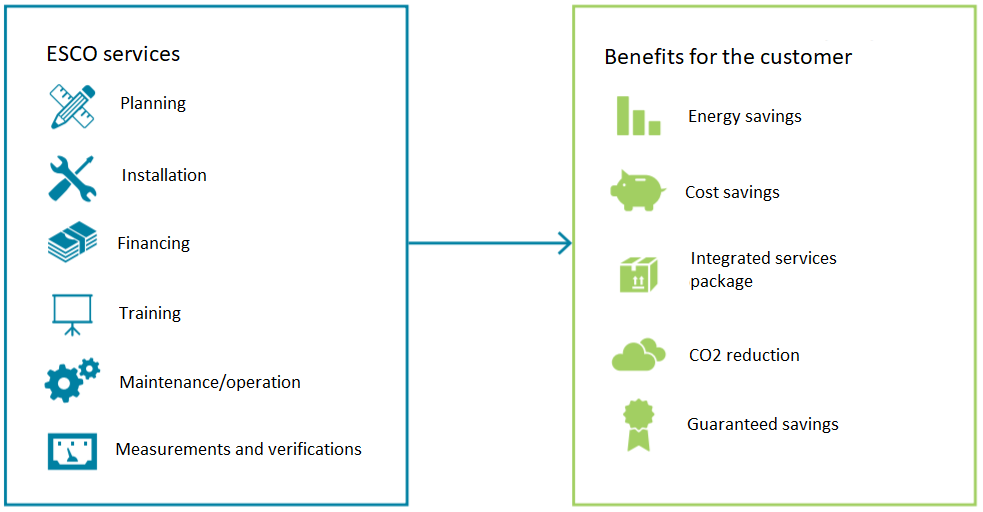Looking back on my barely 10 years in the energy sector, one thing that stands out is how much is going on in the industry: technological innovations and digitalisation, the passing of energy transition legislation, the positions put forward by citizens, the press, politicians and companies, changes in the law (support schemes, the Federal Act on the Reduction of CO2 Emissions, etc.), the rollout of new business models… And the climate emergency has even become a fashionable topic.
The simplest illustration of this is the advent of electric mobility. Not so long ago, imagining a revolution on this scale in the motor industry was regarded as fanciful at best, but today, driving a Tesla is a status symbol that outdoes wearing a Rolex by a mile (and if you had bought shares in Tesla at 17 dollars when the company was floated in 2010 you would now easily be able to afford both).
We are living in exciting times while facing titanic challenges. I am delighted to be part of a generation that is equipping itself with more and more ways to free society from fossil fuels and the collateral damage they are causing: climate change, geopolitical tensions, conflicts and more.
Author
Didier Faure
Area Sales Manager, Siemens EPS
About
Energy Performance Contract (EPC)
This is why I would like to bring up Energy Performance Contracting (EPC) again, a business model that has been in use for years but is still clearly underexploited. The digital revolution has made it easier to roll out, and it is an important tool in achieving the energy transition. In short: we simply cannot afford to ignore this tremendous opportunity to decarbonise our society.
The principles of this model are extremely simple: an energy performance contract is a partnership between a contracting authority and an operator to set an energy efficiency objective. With an energy performance contract, building owners make guaranteed energy and CO2 savings.
In other words
In other words, a contracting authority contracts an energy service company (ESCO) to deliver an energy optimisation project. The ESCO that takes on the project guarantees contractually that over the duration of the contract it will achieve the energy-saving objectives set out (and therefore also the accompanying cost savings and reduction in CO2 emissions). Various projects are under way in Switzerland, in a large number of sectors: municipalities, hospitals, industry, hotels, schools and soon – following the 2020 revision of the ordinance on the leasing of residential and business premises – also rental properties (housing, business premises and government offices).
The contracting authority can be confident it is getting a good-quality renovation and the ESCO continues to ensure energy optimisation throughout the term of the EPC to guarantee the infrastructure’s energy performance on the basis of quantified, mutually approved and contractually agreed objectives. The main benefit of this is a guarantee of the ROI promised when the contract was signed. It is a ‘win-win-win’ model that benefits all the stakeholders: the contracting authority, the ESCO and the climate!
Given that all too often, once the building work and commissioning is complete, no-one is put in charge of keeping tabs on the building’s energy consumption – whether this is down to a lack of human resources or technical knowledge, the conflicting interests of landlords and tenants, the watering down of responsibilities or other reasons limiting the promised energy performance – why is this business model not in use on a massive scale to optimise the energy consumption, reduce the carbon footprint and monitor the energy use of our infrastructures over time?
Three major misconceptions
I have identified three major misconceptions that appear to be commonplace. I would like to share my ideas with you and welcome your comments, dear reader, challenging these arguments (please contact me directly):
1. Confusion between the Energy Performance Contract (EPC) and the Energy (Supply) Contract (ESC)
As its name suggests, an EPC sells a guarantee of performance, with the client retaining ownership of the infrastructure. In an ESC, the client outsources (and therefore relinquishes ownership of) the energy installations, purchasing the energy from a service provider at a set price per kWh. These are two different models: an EPC ensures that one’s installations perform in an energy-efficient way, while an ESC outsources the technical installations and energy supply. The former is about saving kWh, while the latter is about buying kWh.
2. An EPC is not a finance agreement! (But you can still invest in one)
An EPC is a contractual guarantee of energy performance which gives the building owner an assurance of ROI on the renovation work required. Then, at a later stage, the contracting authority has the option of outsourcing its funding. But this is not compulsory. This option can be a very sensible one, particularly with the cost of borrowing being so low as we start to come out of the health crisis.
3. A lack of confidence in the guaranteed energy performance
This is where the digital revolution in the energy industry comes in. Thanks to digitalisation, it is now easy and routine to effectively measure and monitor energy consumption before and after the optimisation work has been carried out, to quantify the savings generated and the objectives achieved. We now have the technology, knowledge and experience, along with the International Performance Measurement and Verification Protocol (IPMVP), to enable a contracting authority and ESCO to draw up a contract and monitor the data, together, to check whether the objectives have been achieved.
Three guiding principles
It is important of course to consider every project on its individual merits, and you can be sure that the ESCO will do its homework very thoroughly before committing to a multi-year contract. If you will indulge me for a moment, I would like to share the experience of the Siemens EPS (Energy & Performance Services) division that I work for. We have more than 600 EPCs in existence around the world with an average contract period of around 10 years, and these have posted a 23% savings excess above the contractual objectives (which is shared between the contracting authority and the ESCO). Here are three guiding principles you can use to assess whether an EPC is appropriate for your infrastructure (not including rental buildings):
a. You need to have a certain level of consumption in terms of annual energy costs (e.g. CHF 500,000/year).
b. The technical conditions must be favourable: a modernisation requirement, installations at their end of life, a strategic carbon footprint reduction goal, security of supply and proper operation, a need for high quality and extremely careful monitoring.
c. EPCs can also apply to renovations relating to passive energy consumption (the building envelope) and are not limited to active energy consumption (building technology). We recommend that you treat these two areas separately. They do not belong to the same sector and do not have the same inertia and return on investment (ROI).
At this point I should perhaps remind us that it is the active energy consumption of a building and not its passive consumption that emits CO2, even if that assertion might result in criticism from some of you. If we are to act speedily and meet the challenge of the climate emergency (and with our young citizens out on the streets demonstrating, we do need to sit up and take notice of the climate emergency), we have to address the heart of the matter. Ditching the gas-fired boiler and installing a heat pump and PV panels for self-consumption – along with two or three charging points for the EVs we’ll all soon be using – will amount to one year’s work with an ROI of around 10 years (covered by an EPC, or even funded through an EPC), and the building’s carbon footprint falls to zero. Then, at a later stage, we can sort out the building envelope. Doing it the other way around involves much longer, more onerous and in some cases dauntingly complex building work and an ROI of more like 20 years. We have to prioritise and think about the risk/benefit ratio; we need to aim for electrification on a massive scale, enabling us to consume locally generated renewable electricity and do away with Russian gas and OPEC oil!

An important new tool
You are probably thinking that this approach is somewhat simplistic and naive; and yet it is an achievable, tangible step forward, the most direct route to our transition from a carbon-based to a carbon-free society. This is the road we must go down if we are to have any hope of containing global warming within a 2- to 3-degree limit.
The Swiss Federal Council has incorporated the EPC in the revision of the Ordinance on the Lease and Usufructuary Lease of Residential and Business Premises that entered into force on 01.06.2020, an important new tool in reducing the carbon footprint of rental property buildings. Put very simply, this ordinance solves the problem of the conflicting interests of landlords, who are responsible for having the work carried out but do not benefit from the resulting energy savings, and tenants, who pay the energy bills but have no say in the quality of their energy installations. This revision encourages more ambitious renovation work for greater energy efficiency, which results in more savings for tenants, who contribute to the cost of the necessary work but benefit from lower energy bills. Real estate is a complex sector involving many factors that have to be taken into account. I will perhaps write about that in a future article. If you are familiar with French (or German or Italian), I encourage you to read the Confederation’s clearly written press release on the subject, which includes a helpful example.
For those of you who like maths, I also invite you to make a very simple calculation for the rental sector, comparing the Confederation’s target (to be carbon neutral by 2050, in 29 years’ time) to the sector’s energy renovation rate (1% per year) and its fossil fuel consumption rate. It’s going to be very difficult to keep our promise; “we have to act without delay… it’s as simple as that.” So, we need to make use of this new EPC mechanism on a massive scale.
And I do not have the space here to go into the fascinating subject of the complete revision of the Federal Act on the Reduction of CO2 Emissions and the growth of support schemes – but these are two aspects that go hand in hand with stepping up the implementation of practical energy efficiency projects.
So, why don’t we take out thousands of EPCs in every sector nationwide, which will ensure not only that the work contracted out is of high quality but will also provide proper energy consumption monitoring in the coming years? This will kill two birds with one stone.
Thank you for your attention. Please get in touch if you would like more information.
Best wishes,
Didier Faure
Area Sales Manager, Siemens EPS – didier.faure@siemens.com
The author

Didier has been involved in the energy transition and sustainable development in Switzerland for more than 10 years. After working freelance and for a consultancy firm for several years, he is currently contracted to the Siemens EPS (Energy & Performance Services) division, implementing and running multidisciplinary public and private infrastructure optimisation projects for schools, sports centres, hotels, hospitals and clinics, factories, building stocks, etc. His knowledge and skills, backed up by the expertise in building technology and smart building solutions held by the team he works with, are challenged daily in his efforts to build a more energy-efficient society working towards carbon neutrality.


